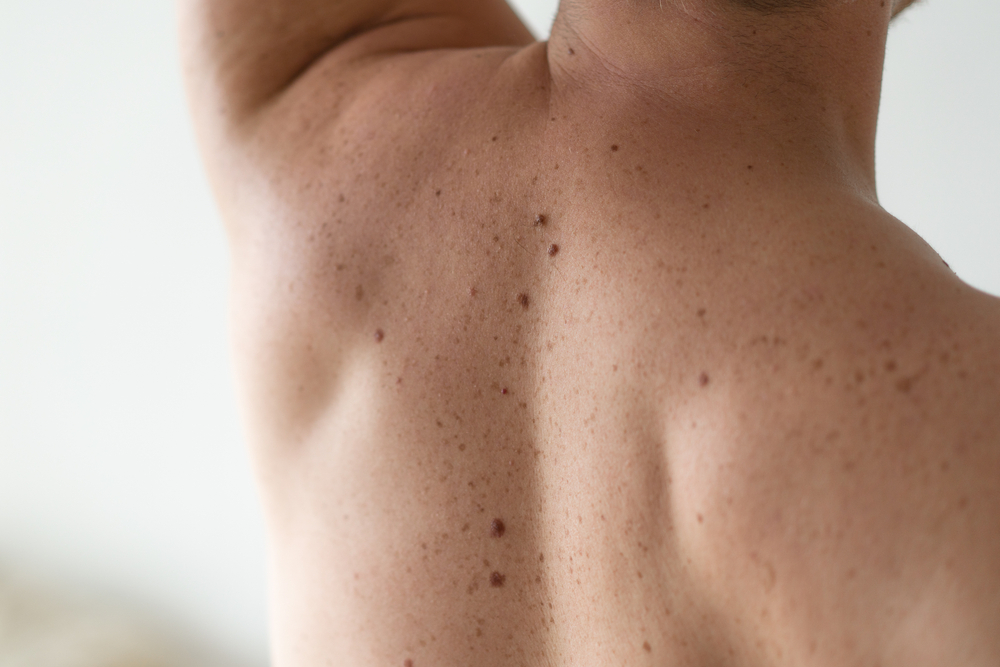Visiting your Dermatologist for regular skin checks is an important part of skin cancer prevention, but they're not the only way to keep your skin healthy and cancer-free. Between visits, you can perform regular self-skin checks at home to help spot skin cancer while it's still small and easily treatable.
Not sure how to do one? Don't worry, we've got you covered. Learn why skin checks are important, what signs to look for, and step-by-step instructions on how to do a skin check at home.
The Importance of Skin Cancer Self-Exams
According to the American Academy of Dermatology, skin cancer is the most common cancer in the United States, and it affects people of all skin colors. This means everyone—including people of color—should perform regular skin cancer self-exams.
It's common and typical to have some skin growths, like moles, skin tags, and cysts, especially as you get older. But not all skin growths are created equal. Different types of skin cancer—including melanoma, basal cell carcinoma, and squamous cell carcinoma—begin with changing spots on your skin. Catching these spots early is key because they're highly curable and much easier to treat when they're small.
So, doing regular skin checks and knowing what signs to look for are an important part of preventing skin cancer progression. They can literally save your life.
Signs of Skin Cancer to Look Out For
Before jumping into how to do a skin check, you should know what to look for. Skin cancer can appear anywhere on your skin, and it comes in different shapes, sizes, and colors. Sometimes, skin cancer can also have symptoms like bleeding or itching.
Skin cancer can look different in different people, but some signs of skin cancer to look for include:
- An open sore that doesn't heal within two to three weeks.
- A mole with any ABCDE changes. This means it isn't uniform or symmetric, has irregular borders, or has different colors from one area to the next.
- Any mole that's changing or that looks noticeably different from your other moles.
- A new growth that's getting bigger, changing colors, or doesn't go away.
- A spot that bleeds, crusts, hurts, or scabs and doesn't go away.
Not all new or changing spots will be skin cancer, but the only way to know for sure is to have them checked. If you're concerned about anything you see on your skin, trust your gut and notify your Derm.
How to Do a Skin Check at Home
You'll need to gather a few simple supplies to do a skin check, including a full-length mirror, a handheld mirror, a hair dryer, and a chair. For some people, it may help to enlist a friend or family member to help (especially with your scalp).
Once you're ready, go through the following steps each month to complete a full skin check. Document your findings either by writing them down or taking a picture with your phone.
1. Get in Position
Remove your outer clothes and stand in front of a full-length mirror. If you're wearing nail polish on your toenails or fingernails, remove it before getting started.
2. Start with Your Face and Torso
Start with the front, including your face, lips, ears, and neck. Next, move down to your chest, including under the breasts and abdomen. Raise your arms to look at your sides and armpits. Then, use a handheld mirror to look at the back of your neck and your back.
3. Examine Your Arms and Hands
Look at your upper and lower arms and elbows in the mirror. Examine the fronts and backs of your hands, in between your fingers, and your fingernails.
4. Check below the Waist
Using one or both mirrors, look at the fronts and backs of your legs and your buttocks. Then, sit to examine your feet (including the soles), between your toes, and your toenails. Finally, use the small mirror to examine your genitals.
5. Scan Your Scalp
Use the hair dryer and hand mirror to expose and examine different parts of your scalp.
Taking Charge of Your Skin Health
Healthy skin starts with you. Skin cancer is common, but it can be prevented and treated easily if caught early. To get your healthiest and most beautiful skin, wear sunscreen daily, visit your Derm, and get to know your skin with regular self-skin checks. Your skin will thank you!

